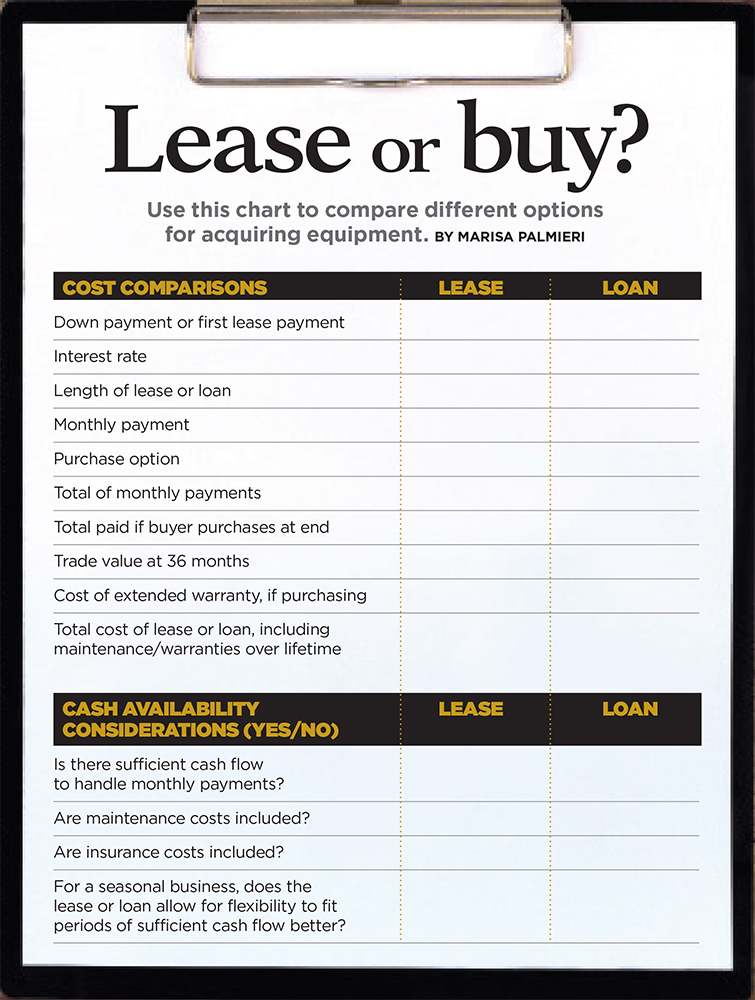Pros + Cons
Leasing and buying are the primary ways landscape contractors add to their fleets, but don’t forget about renting. Here are some pros and cons for each option.
Buying
+Pro: Residual or resale value. You can trade it in down the road to offset the cost of the next equipment you buy.
+Pro: Asset depreciation reduces your tax obligation.
+Pro: Financing is an option, but cash purchases eliminate finance charges and interest costs.
-Con: Payments are generally high because you’re paying for the full value of the equipment.
Leasing
+Pro: Payments are generally lower because you’re only paying for the use and depreciation of the machine. Some leases allow for skipped payments during slow months.
+Pro: No down payments, so it’s easier to replace aging equipment with minimal capital outlay.
+Pro: Helps structure a schedule for replacing equipment before maintenance costs become too expensive.
-Con: Lease agreements can be complex, heavy on fees and unbreakable, which increases the risk for companies.
Renting
+Pro: It provides access to equipment you need occasionally.
+Pro: It allows you to try a machine before you buy it.
+Pro: Users typically aren’t responsible for maintenance costs.
-Con: Daily or weekly rental costs may be high. Remember to figure them into your job costs.
Download a PDF of the checklist here.
Source: biztree.com; empire-cat.com; Small Business Administration; Roy Brookhart, Caterpillar


